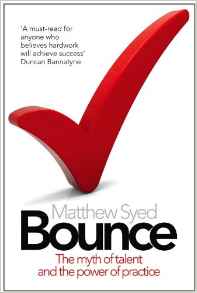What happens in vagus doesn’t stay in vagus
|
|
|
|
|
|
 There will be no tai chi session in Cornwall Park on Sunday 7 March, 2021. Sorry everyone. I know you will be disappointed since we will be Alert Level 2.
There will be no tai chi session in Cornwall Park on Sunday 7 March, 2021. Sorry everyone. I know you will be disappointed since we will be Alert Level 2.
The cancellation was decided by the park’s management and is for all organised events in the park until Monday 8 March. However, you will be allowed to visit the park for individual exercise and recreation. Please following usual social distancing rules and keep at least one metre apart from anyone who is not in your household bubble.
Good news, we will be back doing tai chi in the park on Sunday 14 March 2021, 9am. Let’s hope the weather will be kind to us, too.
More good news, you can still practice tai chi on your own at home or in your local park. Here is a link to a video of co-instructor Juliana and I showing you the warm up exercises and then teaching you Tai Chi for Memory step-by-step. Check it out here: https://youtu.be/cDvuCbOp1r8

Wish you had a magic wand?
Do you wish you had a magic wand so you could be better at tai chi? Do you believe that your lack of coordination will hold you back or that you’re not ‘naturally gifted’?
The truth is out – you don’t have to be genius or gifted at all. And, you don’t need magic, either. It turns out that what our mothers always said is actually right: Practice makes us better.

“Bounce” by Matthew Syed
I’ve been reading a great book on this topic by three-times Commonwealth table-tennis champion, Matthew Syed. Matthew explores what it takes to be successful in sport (and in life) in his book: Bounce: the myth of talent and the power of practice He proves that effort and sustained purposeful practice brings excellence.
So, how do you practice ‘purposely’? Here are some ideas:
Some students tell me they don’t like to practice in case they get it wrong. Here are more ideas to help:

Remember, it is about effort – not talent (nor magic). Practice will help you to say Kia Ora (Hello) to better tai chi.
Find out more:

No need to wish upon a star to be better at tai chi

Great Wall of China
What made me leave my tai chi school of nearly 14 years to become an instructor for the Tai Chi for Health Institute?
I had been stuck on a plateau for some time, due to the ‘one size fits all’ or ‘cookie cutter’ approach of my then tai chi school. I searched for more stimulation and development; I read books, trawled through the Internet and tried a couple of different tai chi schools. I even organised a tai chi tour to China in 2015 and climbed sacred Wudangshan (Wudang Mountain), the tūrangawaewae of tai chi (spiritual home and place to stand for all who feel connected to tai chi).
Other tai chi schools were iniitally helpful in my quest but they didn’t have what I was looking for long-term, or their type of tai chi aggravated an old injury I had.
On YouTube I discovered Dr Paul Lam, the founder and director of Tai Chi for Health Institute (TCHI). I was instantly struck by his openness, his formidable tai chi, his philosophy that tai chi is for everyone and the thorough medical research that he’d conducted to prove the health benefits of tai chi.
A quick search of the TCHI website revealed that one of his two master trainers for New Zealand, Tamara Bennett of Smiling Dragon Tai Chi & Qigong, offered classes at Pukekohe, only 25 minutes away from my home. I soon rocked up to her classes and was impressed.
As I am a qualified teacher for the New Zealand education system, I instantly spotted that Tamara understood teaching methodology and was following a lesson plan. This was the first time I had encountered this in my 20 years of learning martial arts. If someone is good at one skill (whether karate, tai chi, music, maths, cooking, etc) it doesn’t automatically follow that they’ll be good at teaching it. Teaching is an acquired skill that must be learned, just like any other skill. I found out later that Tamara was following the Stepwise Progressive Teaching Method, which had been devised and perfected by Dr Lam.
I was also blown away by her tai chi ability. Throughout my 14 years of tai chi, I had been told by my (now ex) instructors that people who teach it for the health benefits don’t do ‘proper’ tai chi. Well, this was ‘real’ tai chi alright. All of the essential tai chi principles were there in Tamara’s movements and form.
What’s more, she and her students were friendly and welcoming. The barriers I had previously encountered (my age, ethnicity and being female) were not held against me.
Very soon I was flourishing with TCHI’s mix of the Chen, Sun and Yang forms, especially the welcome addition of Qi Gong in the Sun style of tai chi. I loved the blend of Chinese and Western philosophy and medical knowledge. I knew that this was the tai chi school that I would like to be part of.

Tamara awarding my instructor certificates
I had not wanted to become a tai chi instructor until then. As a professional teacher, tai chi gave me a break from teaching. However, a career change meant that I was more open to become a tai chi instructor. When I discovered that TCHI had well-thought out and proven programme to teach instructors, I knew that I would take that path.
I am now a premier TCHI-Board Certified Instructor for four Tai Chi for Health Programmes (find out which ones here). I am also a member of the Tai Chi for Health Community in New Zealand.
I met Dr Paul Lam at recent instructor workshop. He is as genuine and open as he is on YouTube. His tai chi was even more formidable face-to-face than it is on YouTube.
Tamara and my fellow instructors encouraged me to start teaching my own classes. Two came along to my very first opening night to support me and, along with Tamara, they continue to be trusted colleagues that I can call on for advice. Thank you so much Tamara Bennett, Aria Tauroa and Ian Blaine.
A big ‘shout out’ to the Sunday Club guys, too. You know who you are. I could not have come this far without you so thanks for ‘being there’ for me.
I love teaching and I am able to incorporate all of my tai chi skills and knowledge, including from my wider martial arts and teaching background. My students come from all walks of life, are friendly and helpful with each other, and they all want to do well with their tai chi. I can see that they practice between classes and that’s pretty amazing when compared with my experience at other tai chi schools.
After being stuck on a plateau for so long I feel energised and excited about my tai chi and the future. TCHI has been the right move because it offers:
Find out more:
Photos from Wudangshan (Mt Wudang), Hubei province, China:

Jindian Temple at the summit of Wudang Mountain, 900 steps up

Mt Wudang summit (and the Jindian Temple) – view from the top


Samarkand, Uzbekistan
There’s a lot to love about tai chi – especially that you can do it almost anywhere, at any time.
Wherever I am during the day and across the world, it is easy to practice tai chi. One of my most memorable tai chi locations was in the Kyzylkum (Qizilqum) Desert in Uzbekistan. The word “Qizilqum” means “Red Sand” in the Uzbek language. I had an exotic, Uzbek-carpeted platform to stand on and the early morning sun rays stretched my shadow far across the desert. Fabulous. It was also very cold and I needed all of my Qi (energy flow) to keep warm.

Kyzylkum Desert in Uzbekistan
Further below, I’ve uploaded a few of my favourite spots around the world where I’ve tried tai chi.
You don’t need a special uniform or equipment to do tai chi and you don’t need to go to a gym. Whether at home, at work or when travelling you can practice tai chi in your lounge, the park, the beach, at your desk, on a plane or in your campsite or hotel room. You don’t have to wait until the rain stops or for the sun to be less hot. The benefits of tai chi are the same, whether indoors or outside.
There is no ‘proper’ time of day, either. While you might find it easier to have a set time per day for tai chi, there is never just ONE chance per day. Some people prefer mornings, while others choose an afternoon or evening session. 15-20 minutes per day is great, although you could get benefits from just five minutes of tai chi daily. However, 10 minutes are better than five and 15 minutes are better than 10.

Halong Bay, Vietnam
If you only have five minutes to spare on some days, then that is better than nothing. However, it is vital to warm up before you do tai chi. So, if all you have is 5-10 minutes, then just concentrate on the warm-up exercises and your breathing. Gently do a small number of these exercises according to the limited time you have, rather than try to rush through the full set. Or, just try the breathing exercises, as in the Open & Close movement in the Sun-style Tai Chi for Arthritis programme. This is perfect when sitting at your desk at work.
However, to receive the full benefits from tai chi, then you need to be doing it daily and for longer than five minutes. Still, it is better to make a start with a short session than to do nothing.
What are the benefits of Tai Chi for Arthritis?
Anywhere, anytime – say Kia Ora (Hello) to tai chi. Start today and keep it going.
Find out more from Dr Paul Lam:

Abbey Road crossing, London, England